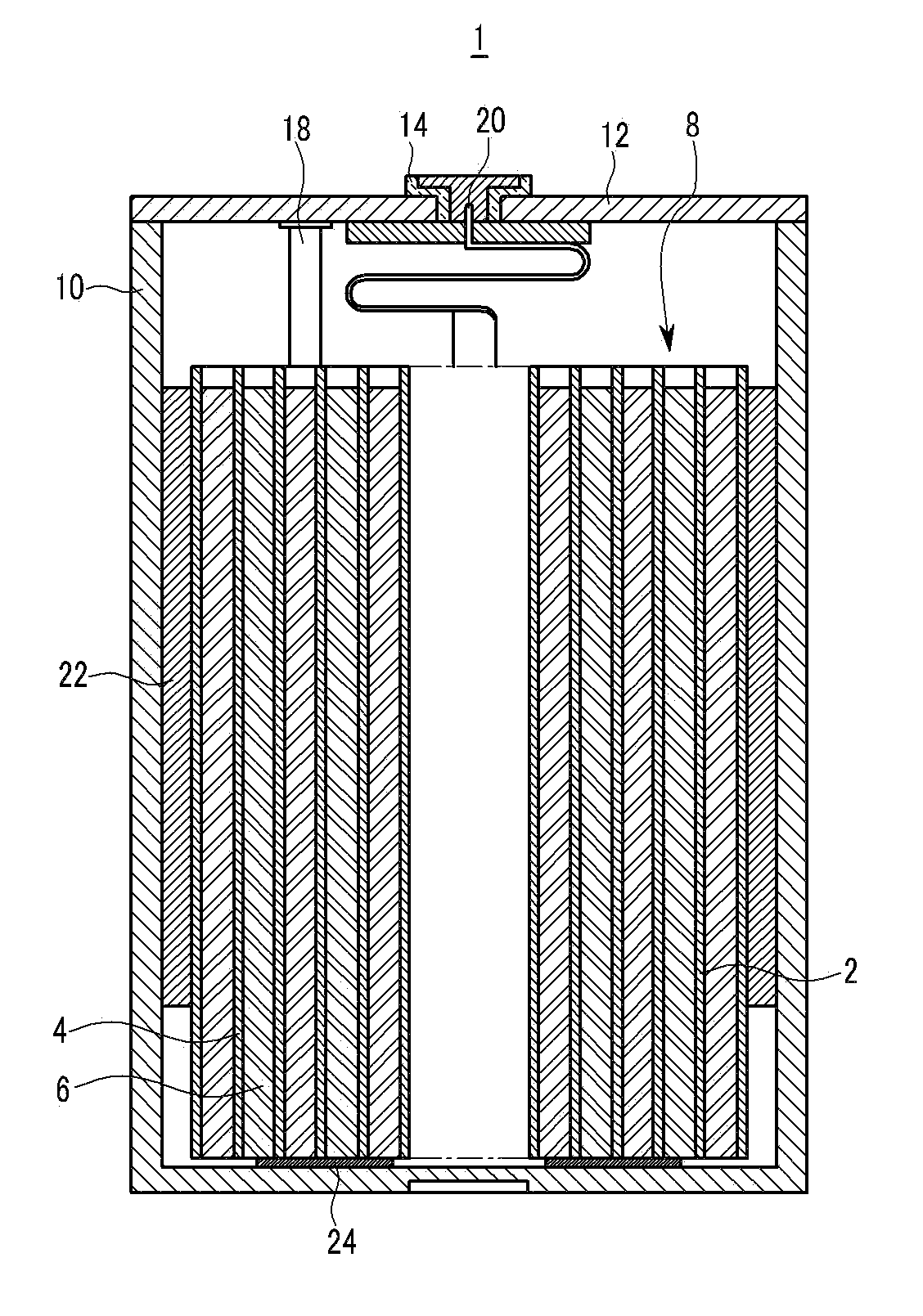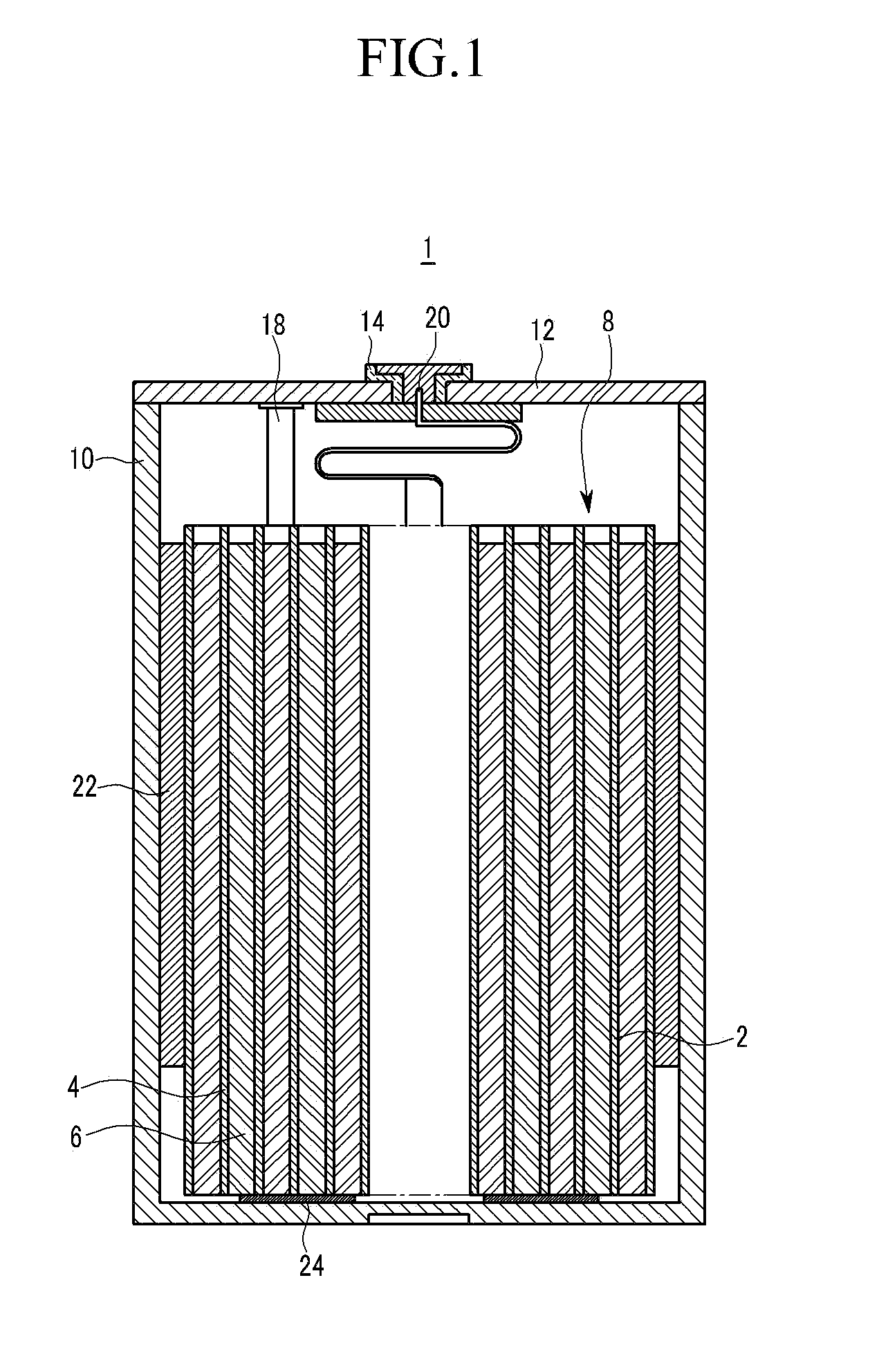Positive active material for rechargeable lithium battery, method of preparing the same, and rechargeable lithium battery including the same
- Summary
- Abstract
- Description
- Claims
- Application Information
AI Technical Summary
Benefits of technology
Problems solved by technology
Method used
Image
Examples
example 1
[0082]1 g of aluminum nitrate and 0.5 g of lithium nitrate were added into a reactor and mixed with 50 ml of water at 70° C. for 30 minutes. To the reactor, 0.4 g of ammonia was slowly added to adjust the pH to be 5, and then aluminum lithium hydrate was precipitated at the reactor bottom. The precipitated aluminum lithium hydrate was obtained and dried under reduced pressure at 50° C. for 3 hours to obtain a white nano-sized powder (0.5 g, 10 to 200 nm).
[0083]The aluminum lithium hydrate was dispersed in 100 ml of ethanol, 100 g of LiCoO2 (10 μm) was added, and the mixture was agitated at 50° C. for 20 hours. Subsequently, the obtained precursor was dried at 100° C. for 3 hours and heat-treated at 700° C. for 5 hours to provide a positive active material.
example 2
[0084]A positive active material was obtained in accordance with the same procedure as in Example 1 except that 2.0 g of aluminum nitrate and 1.0 g of lithium nitrate were used to provide aluminum lithium hydrate (0.8 g).
example 3
[0085]A positive active material was obtained in accordance with the same procedure as in Example 1 except that 2.5 g of aluminum nitrate and 1.5 g of lithium nitrate were used to provide aluminum lithium hydrate (1.1 g).
PUM
 Login to View More
Login to View More Abstract
Description
Claims
Application Information
 Login to View More
Login to View More - R&D
- Intellectual Property
- Life Sciences
- Materials
- Tech Scout
- Unparalleled Data Quality
- Higher Quality Content
- 60% Fewer Hallucinations
Browse by: Latest US Patents, China's latest patents, Technical Efficacy Thesaurus, Application Domain, Technology Topic, Popular Technical Reports.
© 2025 PatSnap. All rights reserved.Legal|Privacy policy|Modern Slavery Act Transparency Statement|Sitemap|About US| Contact US: help@patsnap.com



